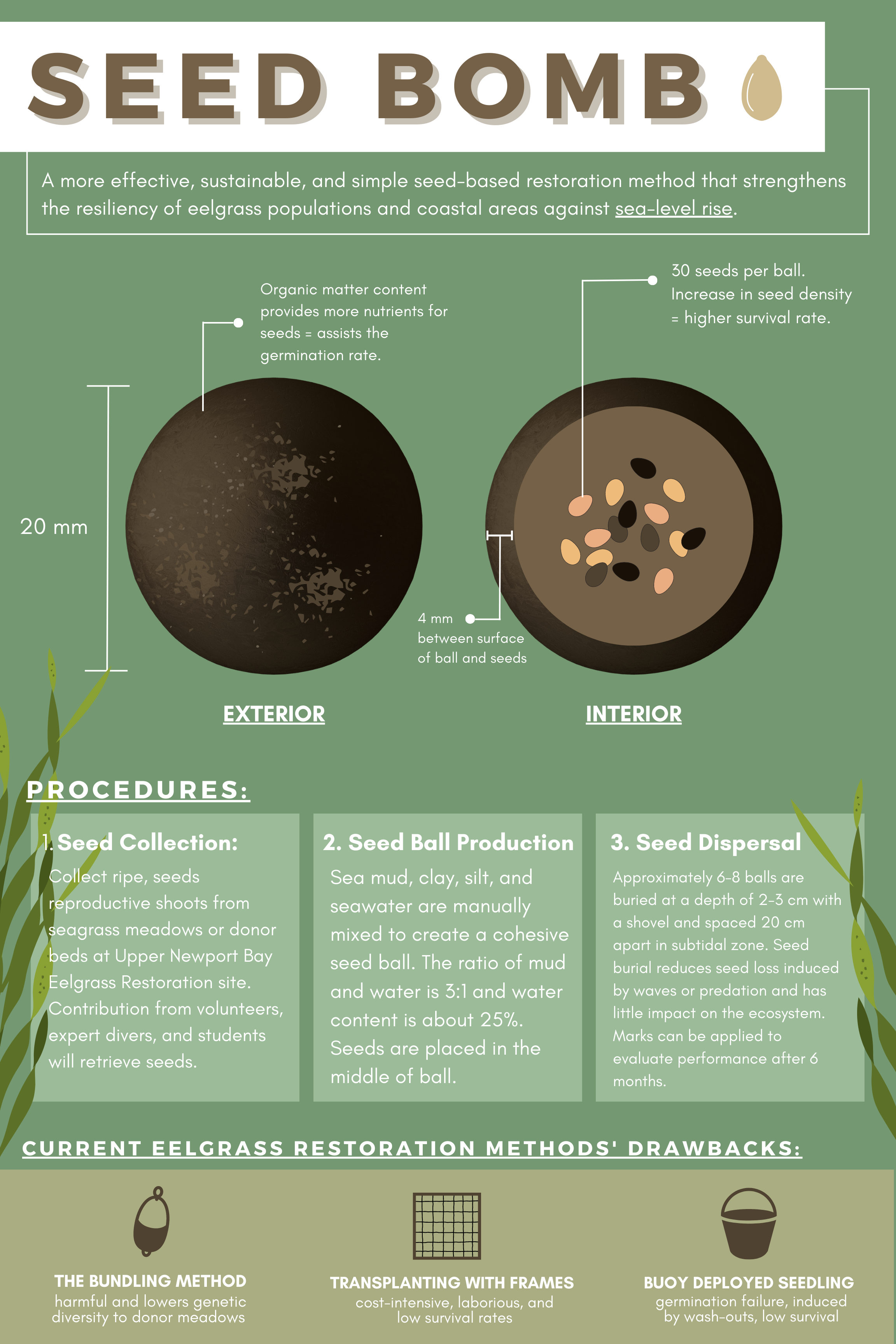Southern California's home to many coastal spots is threatened by rising sea levels, and two-thirds of it could erode completely by 2100. Flooding could cause 15 billion dollars of property damage which would impact 26.3 million Californians that live in coastal areas. In response to this concern, natural buffers, specifically eelgrasses, have helped stabilized sediments against erosion. However, poor water quality has drastically lowered their survival rates, listing them as now highly endangered species. To restore the eelgrass population, I proposed “Seed Bomb”, a cost-effective, sustainable, and simple seed-based restoration method to increase germination. With the help of volunteers and expert divers from my local’s eelgrass site, ripe seeds will be collected from eelgrass meadows or donor beds. Mud balls consisting of sea mud, clay, silt, and saltwater will be formed and approximately 30 seeds will be placed in the ball. Next, six to eight seed balls will be buried across the site’s subtidal zone at a depth of 2-3 cm. Seed Bomb has a higher seedling survival rate and generates no pollution compared to current restoration methods. Eelgrass protection is pivotal for future sustainability and coastal management, and Seed Bomb yields positive long-term results in mitigating sea-level rising.
Contact us
Thank you for your interest in contacting Future Engineers. We look forward to connecting with you!
General Inquiries
support@futureengineers.orgSponsorship Inquiries
sponsor@futureengineers.org
